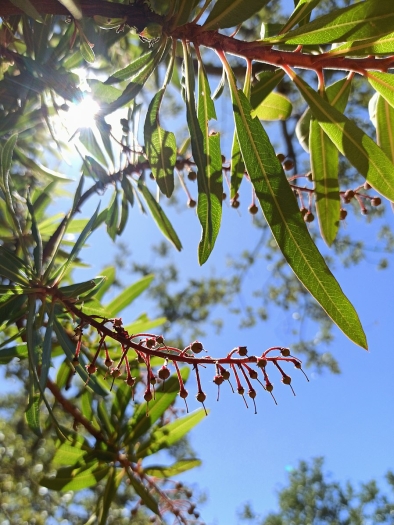Texas Madrone
(Comarostaphylis polifolia)
Texas Madrone (Comarostaphylis polifolia)
/
/

Juan Carlos Fonseca Mata
CC BY-SA 4.0
Image By:
Juan Carlos Fonseca Mata
Recorded By:
Copyright:
CC BY-SA 4.0
Copyright Notice:
Photo by: Juan Carlos Fonseca Mata | License Type: CC BY-SA 4.0 | License URL: https://creativecommons.org/licenses/by-sa/2.0 | Uploader: Juan Carlos Fonseca Mata | Publisher: Wikimedia Commons |





























Estimated Native Range
Summary
Comarostaphylis polifolia, commonly known as Texas Madrone, is an evergreen tree or large shrub native to the oak woodlands and pine-oak forests in the mountains of Central and Northeast Mexico. It typically grows to a height of 8-13 feet (2.4-4 meters) and a width of 3-15 feet (0.9-4.6 meters). The Texas Madrone is notable for its smooth, exfoliating bark that reveals a striking reddish or coppery color beneath. It bears small, bell-shaped, white to pink flowers in the spring, which are followed by red to orange berries that attract birds and other wildlife.
Texas Madrone is valued for its drought tolerance, making it suitable for xeriscaping and water-wise gardens. Its ornamental bark and berries add year-round interest, and it can be used as a focal point in a garden or incorporated into native plant landscapes. It requires well-drained soils, preferably acidic to neutral, and thrives in full sun but can tolerate partial shade. While it is not commonly found in cultivation outside its native range, it can be a unique addition to a garden with the right conditions. Care should be taken to avoid overwatering, as it is susceptible to root rot in poorly drained soils.CC BY-SA 4.0
Texas Madrone is valued for its drought tolerance, making it suitable for xeriscaping and water-wise gardens. Its ornamental bark and berries add year-round interest, and it can be used as a focal point in a garden or incorporated into native plant landscapes. It requires well-drained soils, preferably acidic to neutral, and thrives in full sun but can tolerate partial shade. While it is not commonly found in cultivation outside its native range, it can be a unique addition to a garden with the right conditions. Care should be taken to avoid overwatering, as it is susceptible to root rot in poorly drained soils.CC BY-SA 4.0
Plant Description
- Plant Type: Tree
- Height: 8-13 feet
- Width: 3-15 feet
- Growth Rate: Slow
- Flower Color: White
- Flowering Season: Spring
- Leaf Retention: Evergreen
Growth Requirements
- Sun: Full Sun
- Water: Low
- Drainage: Medium
Common Uses
Drought Tolerant
Natural Habitat
Oak woodlands and pine-oak forests in the mountains of Central and Northeast Mexico
Other Names
Common Names:
Scientific Names: , Comarostaphylis polifolia, Andromeda ledifolia, Arctostaphylos latifolia, Arctostaphylos oaxacana, Uva-ursi polifolia,
GBIF Accepted Name: Comarostaphylis polifolia (Kunth) Zucc. ex Klotzsch